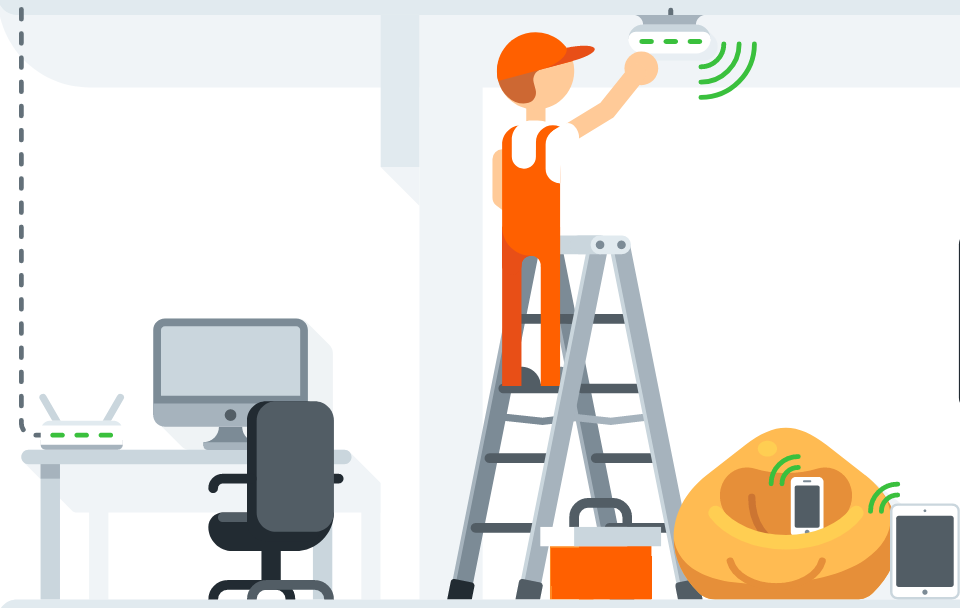WiFi Access Point Installation
Wireless Access Points (WAPs) connect traditional wired networks to wireless clients. These wireless networks provide ease of access to the network for mobile users, increasing productivity while reducing infrastructure costs.
A WAP is a device that allows different types of wireless network cards to connect without cables, hence wireless, to connect to LANs and access resources, including the Internet. A WAP plugs into a hub or switch and is the device that joins the unwired network to the wired network. As shown earlier, you can put a router or firewall between the wireless network and the wired network providing a secure barrier between the unsecured wireless network and the secure wired network. WAPs support the standards we defined earlier; if you are using an 802.11b WAP then most 802.11b/g/n cards should be able to access them as they all operate on the same 2 GHz frequency. If you have an 802.11a access point you will need an 802.11a card as this is not in the same frequency as the other standards. There are a few access points that support both the 2 GHz and the 5 GHz range. They are rare and expensive. There are also routers that support wireless connections as well.


Undeniably, installing a wireless access point will increase wifi signal throughout your home or business allowing devices to operate within those nasty black-spots whilst improving performance and latency. Adding a wifi access point to your network will allow users to seamlessly roam from one room to another room on the same SSID.
